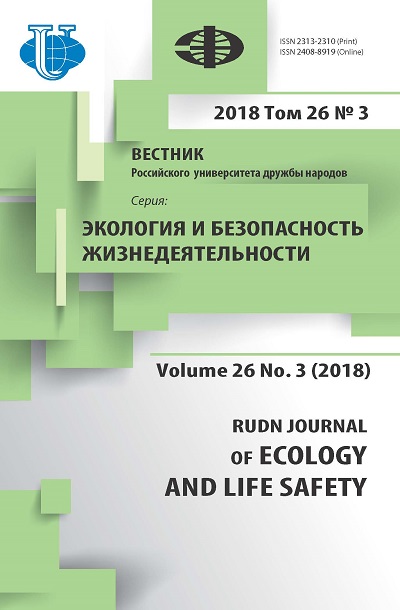Comparative ecological analysis of the avifauna of the city parks of Minsk
- Authors: Svistun E.K.1
-
Affiliations:
- International Sakharov Environmental Institute of Belarusian State University
- Issue: Vol 26, No 3 (2018)
- Pages: 285-298
- Section: Ecology
- URL: https://journals.rudn.ru/ecology/article/view/20873
- DOI: https://doi.org/10.22363/2313-2310-2018-26-3-285-298
Cite item
Full Text
Abstract
The paper presents data on the environmental features of the avifauna of the parks in Minsk. Ecological groups and ecological status of birds are revealed. The greatest variety is characterized by a group of Passerine. The dominant species are forest birds. It is established that the majority of birds are nesting settled. The most favorable place for birds is the territory of the Drozdy Park.
Keywords
About the authors
Elena Konstantinovna Svistun
International Sakharov Environmental Institute of Belarusian State University
Author for correspondence.
Email: svistyn.alena@yandex.by
master student (1st year) of the Faculty of International Sakharov Environmental Institute of Belarusian State University; biology teacher of the Minsk State Professional Technical College of Light Industry and Consumer Services.
23/1 Dolgobrodskaya St., Minsk, 220070, Republic of BelarusReferences
- Khandogiy DA. Osobennosti prostranstvennoy struktury ptits pri ruslovykh biotopakh reki Svisloch’ i parkovykh zon Minskogo Megapolisa [Features of the spatial structure of the birds of the riparian habitats of the river Svisloch and Park zones of Minsk Metropolis]. Voprosy estestvoznaniya [Problems of natural Sciences]. 2010: 3—11.
- Lebedeva NV. Geografiya i monitoring bioraznoobraziya [Geography and monitoring of biodiversity]. M.: Nauchnyi i uchebno-metodicheskii tsentr Publ.; 2002.
- Medvedev NV. Metody kolichestvennogo ucheta ptits [Methods of quantitative accounting of birds]. Petrozavodsk: PetrGU Publ.; 2013.
- Grichik VV. Zhivotnyy mir Belarusi. Pozvonochnye [The Fauna of Belarus. Vertebral]. Mn.: BGU Publ.; 2013.
- Dorofeev SA. Zakonomernosti prostranstvennogo raspredeleniya i formirovaniya ornitokompleksov sosnovykh lesov belorusskogo poozer’ya [Regularities of spatial distribution and formation of ornithocomplexes of pine forests of the Belarusian lake]. Aktual’nye problemy zoologicheskoy nauki v Belarusi [Actual problems of Zoological science in Belarus]. 2017;1: 119—128.
















